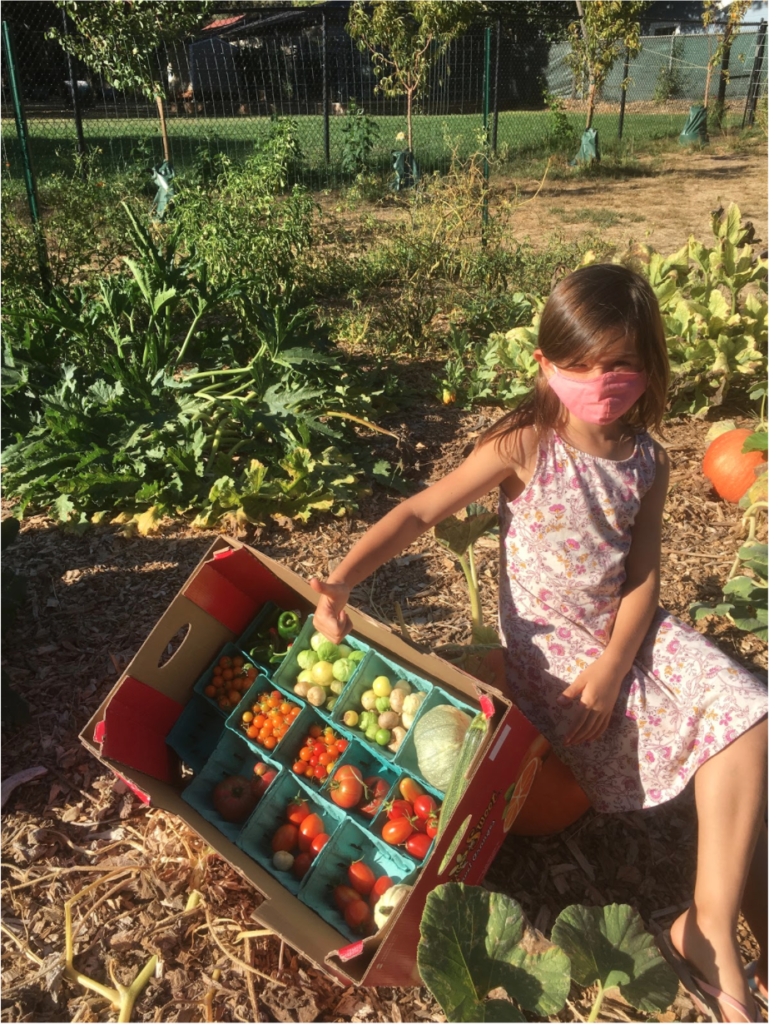Written by Zoee Tanner, Education and Curriculum Development
It’s no question that school gardens can make quite an impact on a student’s learning and development. Garden-based education programs have been shown to positively influence children’s produce intake, better academic performance (Berezowitz et al., 2015), and enhance knowledge across curriculum areas especially in science (Rye et al., 2012). Through our Living Campus program, Each Green Corner collaborates with school’s to create garden-centered educational settings providing the perfect environment for implementing curriculum around food systems that support student learning while cultivating an appreciation for fresh food. The next question that arises is where will this curriculum come from and how will it tackle nurturing food exploration?

Introducing Each Green Corner’s Food Explorer program
The Education and Curriculum Development team has been busy growing a food systems curriculum for our partner Living Campus school sites. This interactive curriculum is being designed to align with current California health education standards and district wellness education initiatives while connecting to EGC’s mission areas in nutrition, food security, sustainability, and social justice. The program is built with a two-year cycle in mind to ensure time is properly given to dive into each topic around food systems. Each month will consist of a single lesson with both an in-class and in-garden component that allows students to get into the garden thereby fostering a secondary interactive learning experience for educators and their students. In addition, each month will include a themed take-home newsletter for children and families with additional activities to build a bridge through which students and their families can apply what is learned in the curriculum together at home. Each Green Corner recognizes the necessity for cultural inclusiveness and equity in garden spaces thus this newsletter will also place importance on sharing culturally-diverse, nutritional recipes that can utilize produce from the garden. With that, the first year of the cycle will focus on equity while the second year will focus on sustainability providing a balance between understanding the food system’s social and environmental impacts. The overarching goal of the Food Explorers program is to cultivate food connections in children that encourage their curiosity and promote food literacy while building a lifelong foundation for nutritional wellness. By the end of the program, each student will have developed their own unique perspective of the food system and grown into a food explorer.
Each Green Corner is ecstatic to announce that an initial pilot lesson around ecosystems in the garden is being rolled out for Earth Day this week at Arundel Elementary. In this lesson, students will have a chance to explore the garden, make observations around living vs non-living things, and understand the interconnectedness between living things and their environment. After their exploration, students will be able to design their own ecosystem and think critically about the role humans have within an ecosystem. Our future plans for the program involve further development of lessons through continued collaboration with local educators, administrators, and the district wellness coordinator to ensure that the lessons are built with the local districts vision in mind. The entire program is set to launch this Fall for the 2021-22 school year, and we can’t wait to see our future food explorers in the garden!
Want some at-home Earth Day activities?
Check out our resources tab and the EGC Facebook page for an educational and fun pamphlet celebrating Earth Day!
References
Berezowitz, C. K., Bontrager Yoder, A.B., & Schoeller, D.A. (2015). School Gardens Enhance Academic Performance and Dietary Outcomes in Children. Journal of School Health, 85(8), 508-518.
Rye, J. A., Selmer, S. J., Pennington, S., Vanhorn, L., Fox, S., & Kane, S. (2012). Elementary School Garden Programs Enhance Science Education for All Learners. TEACHING Exceptional Children, 44(6), 58-65.
0 Comments